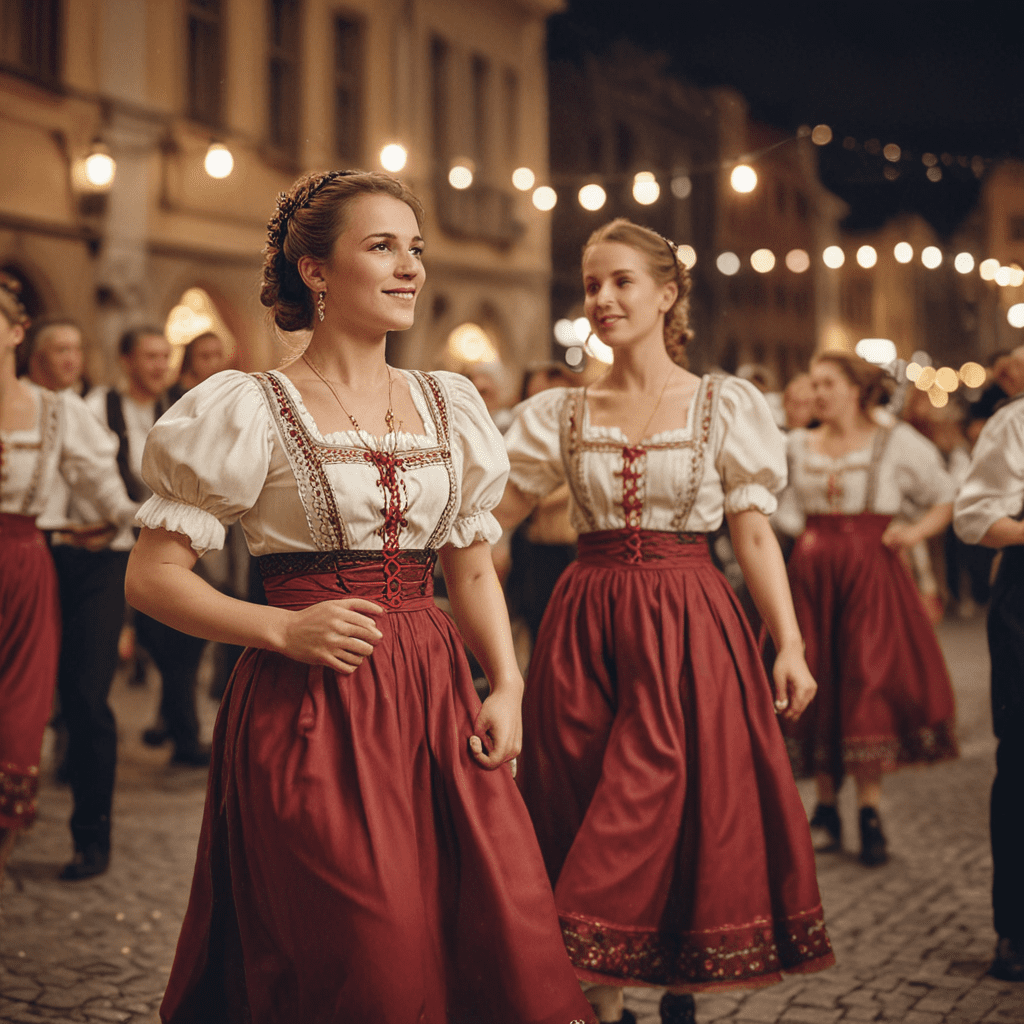
1. Introduction
Austria is renowned for its rich musical and dance traditions deeply rooted in its diverse regions. Traditional folk music in Austria is a vibrant expression of the country's cultural heritage, captivating audiences with its unique melodies, rhythms, and lyrical themes. The lively folk dances, often performed in traditional costumes, reflect Austria's strong connection to its rural past.
2. History and Origins
The origins of Austrian folk music can be traced back centuries, emerging from the alpine regions and the diverse ethnic groups that populated the area. Over time, these musical influences blended with elements from neighboring countries, such as Germany and Hungary, creating a unique and varied folk music tradition. The rich history of Austria's folk music is reflected in the diverse regional variations found throughout the country.
3. Regional Variations
Austria's folk music is characterized by its regional diversity, with each province exhibiting its own unique sound and style. In Tyrol, for example, yodelling and alpine melodies dominate, while Carinthia is known for its lively polkas and waltzes. Styria boasts a strong tradition of accordion-based music, while Burgenland's folk music draws influences from neighboring Hungary. These regional variations showcase the cultural richness and diversity of Austrian folk traditions.
4. Instruments and Musicianship
The instrumentation of Austrian folk music is diverse and includes a variety of traditional instruments. The accordion, fiddle, and zither are commonly used, along with clarinets, trumpets, and drums. Musicians often display remarkable virtuosity and improvisation skills, adding their own unique interpretations to the traditional melodies and rhythms.
5. Vocal Traditions: Yodelling and Jodeling
Yodelling, a unique vocal technique, is an integral part of Austrian folk music, particularly in the alpine regions of Tyrol and Salzburg. Yodellers skillfully control their vocal cords to create alternating high-pitched and low-pitched sounds, producing a characteristic and haunting sound. Jodeling, a similar vocal technique, is also practiced in Austria, although it typically involves a more sustained high-pitched sound.
6. Traditional Dance Forms
Austrian folk dances are a captivating spectacle, reflecting the country's rich cultural heritage. The most well-known Austrian dance is the Landler, a couple's dance featuring lively steps and twirling movements. Other popular dances include the Polka, known for its fast tempo and energetic steps, and the Waltz, a romantic and elegant dance. Folk dances are often performed at festivals and gatherings, showcasing the vibrant and joyous nature of Austrian culture.
7. Cultural Context: Festivals and Gatherings
Traditional folk music and dance in Austria are deeply intertwined with the country's festivals and gatherings. These events provide a platform for musicians and dancers to showcase their skills, and for the community to come together and celebrate their heritage. The most renowned folk festival in Austria is the Salzburg Festival, which hosts a variety of traditional music and dance performances alongside classical concerts. Other notable festivals include the Klagenfurt Folk Art Festival and the Styrian Autumn Festival.
8. Influence on Classical Music
Austrian folk music has had a profound influence on the development of classical music. Many renowned composers, including Wolfgang Amadeus Mozart and Franz Schubert, incorporated elements of folk melodies and rhythms into their works. The use of folk themes in classical music added a uniquely Austrian flavor and enriched the musical landscape of the region.
9. Revival and Preservation Efforts
In recent decades, there has been a growing interest in reviving and preserving traditional folk music and dance in Austria. Numerous organizations, such as the Austrian Folk Music Association, are dedicated to promoting and teaching these traditions to younger generations. Festivals and workshops are held throughout the country, providing opportunities for people to learn and experience Austrian folk culture firsthand. These efforts play a vital role in ensuring the continuity of this vibrant and cherished tradition.
10. Contemporary Folk Scene
The contemporary folk scene in Austria is thriving, with a new generation of musicians re-interpreting traditional tunes and creating fresh and innovative sounds. Artists such as Hubert von Goisern and Ernst Molden have gained international recognition for their unique blends of folk, rock, and world music. These contemporary folk musicians are pushing the boundaries of the genre while staying true to its roots, ensuring the continued evolution of Austrian folk music.
Frequently Asked Questions (FAQs)
Q: What is the most popular folk dance in Austria?
A: The Landler is the most well-known Austrian folk dance, characterized by its lively steps and twirling movements.
Q: Where can I experience traditional Austrian folk music and dance?
A: Festivals and gatherings throughout Austria provide platforms for musicians and dancers to showcase their skills. Notable events include the Salzburg Festival, the Klagenfurt Folk Art Festival, and the Styrian Autumn Festival.
Q: How has Austrian folk music influenced classical music?
A: Renowned composers such as Mozart and Schubert incorporated elements of Austrian folk melodies and rhythms into their works, adding a unique and characteristic flavor to classical music.
Q: What efforts are being made to preserve Austrian folk traditions?
A: Organizations like the Austrian Folk Music Association are dedicated to promoting and teaching folk music and dance to younger generations. Festivals, workshops, and cultural events play a crucial role in safeguarding this valuable heritage.
Q: Is there a contemporary folk scene in Austria?
A: Yes, a thriving contemporary folk scene exists in Austria, with musicians like Hubert von Goisern and Ernst Molden reinterpreting traditional tunes and blending them with other genres. These artists are pushing the boundaries of folk music while honoring its roots.


